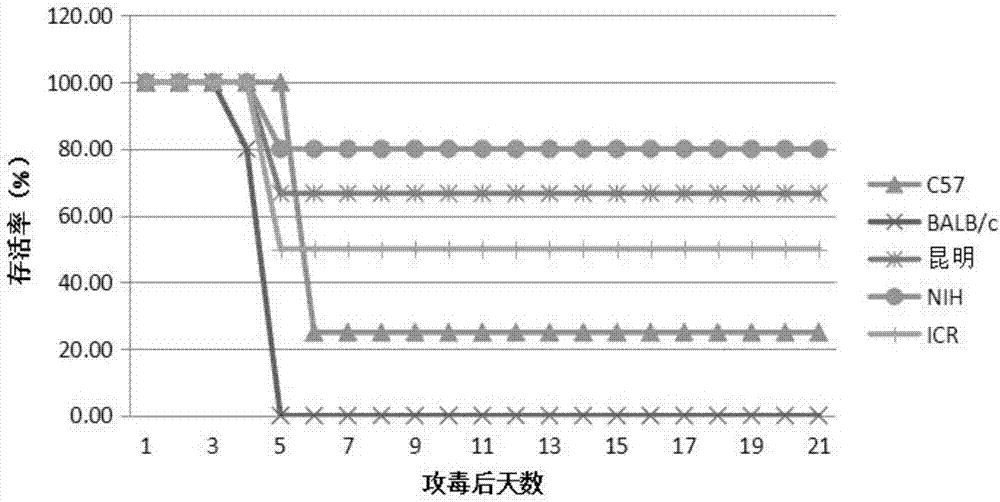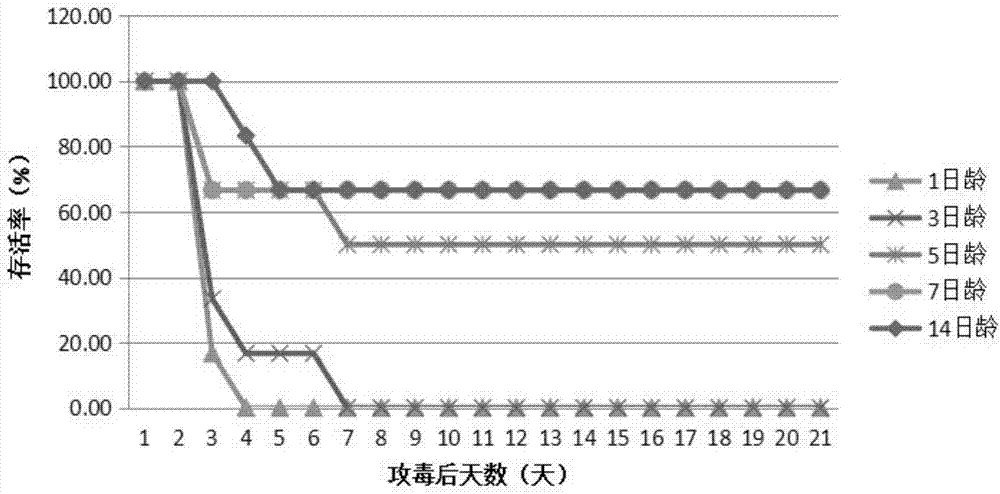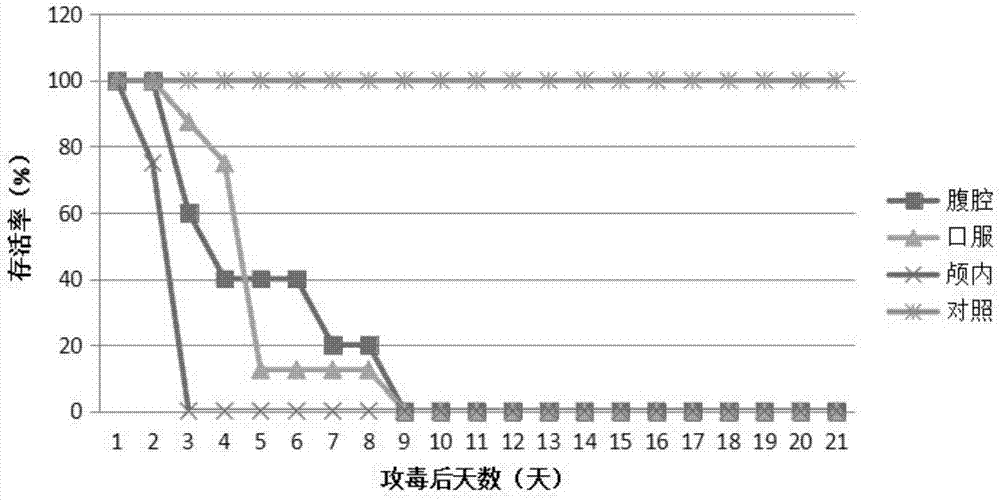Coxsackievirus B5 CV-B5 and application thereof in preparing infectious animal models and kits
A technology for coxsackie virus, infecting animals, applied in the field of virology, can solve the problem that the animal model of brain lesions or spinal neuropathy has not been established effectively.
- Summary
- Abstract
- Description
- Claims
- Application Information
AI Technical Summary
Problems solved by technology
Method used
Image
Examples
Embodiment 1
[0032] Example 1 Isolation and establishment of CVB5 / JS417 virus strain
[0033] Taking the clinical samples of hand, foot and mouth cases in Jiangsu area collected in 2013 as the research object, a virus strain that can replicate stably was obtained by separating and purifying VERO cells, named CVB5 / JS417, and preserved in the General Microbiology Center of China Microbiological Culture Collection Management Committee , the deposit number is CGMCC No.13851. After the amplification of the whole gene sequence, the comparison of the gene sequence confirmed that it is a Coxsackievirus B Group 5 type virus (Coxsackievirus B Group 5type), and the full length of the gene is 7370bp. The detection of exogenous factors confirmed that the virus strain was not contaminated by other exogenous factors. According to the analysis of biological characteristics, the virus titer of the virus strain is 8.50LgCCID50 / ml.
[0034] Among them, sampling of pathogens, cell separation and purificatio...
Embodiment 2
[0035] The establishment of embodiment 2 CV-B5 animal model
[0036] (1) Selection of animal strains
[0037]BALB / c, C57, NIH, ICR, and Kunming mice aged 1 to 3 days were selected for intraperitoneal infection with the same dose of CVB5 / JS417 virus. After 3 days, the experimental animals successively showed hindlimb paralysis, malaise and even death. Among them, 70% to 100% of the experimental mice in the BALB / c and C57 mouse groups died after 6 days of infection.
[0038] Considering that BALB / c mice are inbred mice with a more similar genetic background, which is conducive to the consistency of the experiment, BALB / c mice were selected to establish the CV-B5 animal model for further experiments.
[0039] (2) Selection of the age of suckling mice
[0040] BALB / c mice of 1, 3, 5, 7, and 14 days old were intraperitoneally challenged with the same dose of CVB5 / JS417 virus strain, and the survival rate was observed.
[0041] Such as figure 2 As shown, CVB5 / JS417 can cause mo...
Embodiment 3
[0052] Embodiment 3 pathological conditions
[0053] Set up the CV-B5 mouse experimental animal model according to the mode described in Example 2 section (4), collect respectively the brain, heart, liver, kidney, lung, spleen, spinal cord and other tissues of dying experimental mice after the attack for pathological examination and Immunohistochemical staining.
[0054] The control group was obtained with physiological saline according to the same test method, collection time and inspection method as the experimental animals.
[0055] The pathological examination adopts tissue fixation, paraffin section, pathological HE staining and immunohistochemical staining, and microscopic observation, and judges the results based on tissue sections of normal newborn mice and negative control mice. The judgment of pathological examination and immunohistochemical staining results are routine means in the field.
[0056] Histopathological results such as Figure 6 As shown, obvious eosi...
PUM
 Login to View More
Login to View More Abstract
Description
Claims
Application Information
 Login to View More
Login to View More - R&D
- Intellectual Property
- Life Sciences
- Materials
- Tech Scout
- Unparalleled Data Quality
- Higher Quality Content
- 60% Fewer Hallucinations
Browse by: Latest US Patents, China's latest patents, Technical Efficacy Thesaurus, Application Domain, Technology Topic, Popular Technical Reports.
© 2025 PatSnap. All rights reserved.Legal|Privacy policy|Modern Slavery Act Transparency Statement|Sitemap|About US| Contact US: help@patsnap.com



